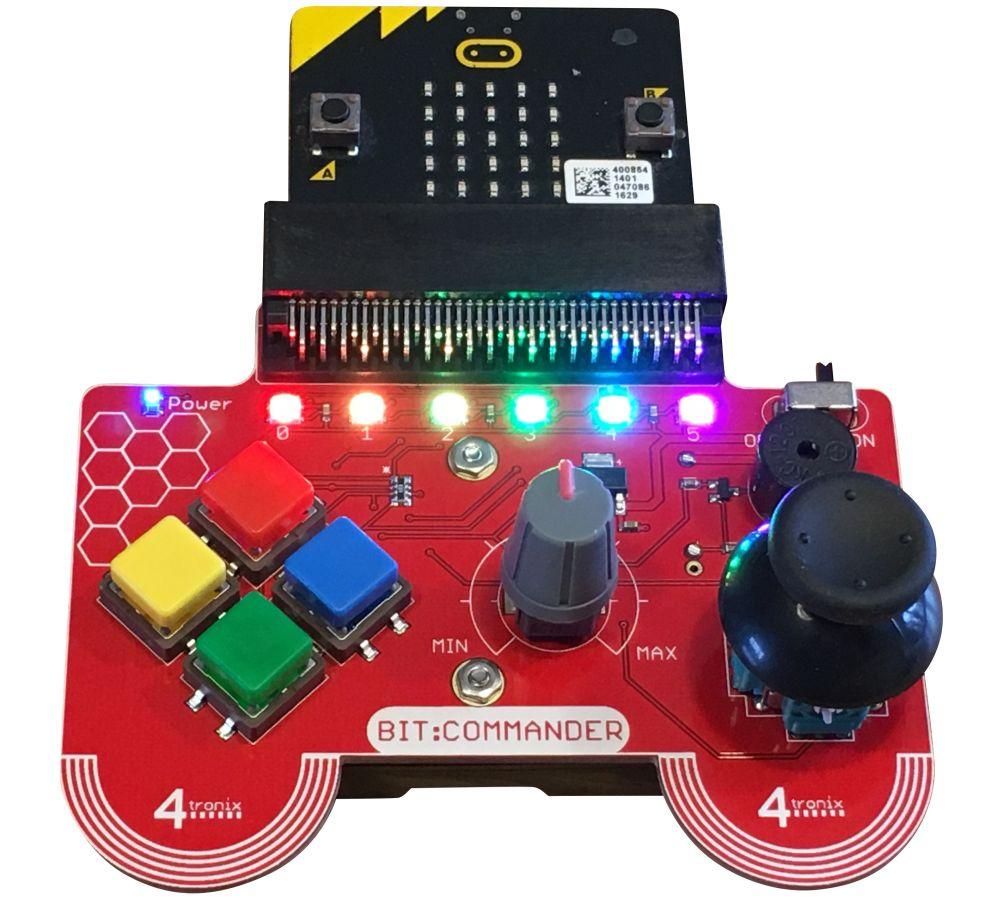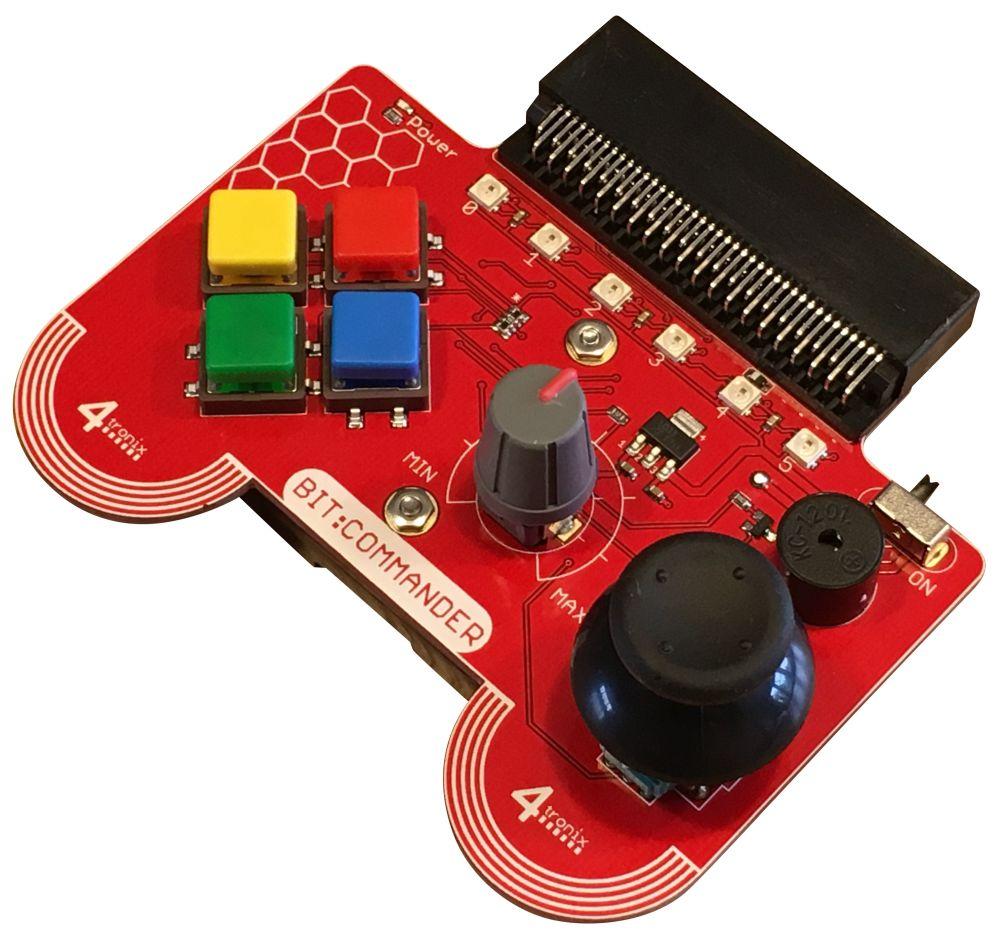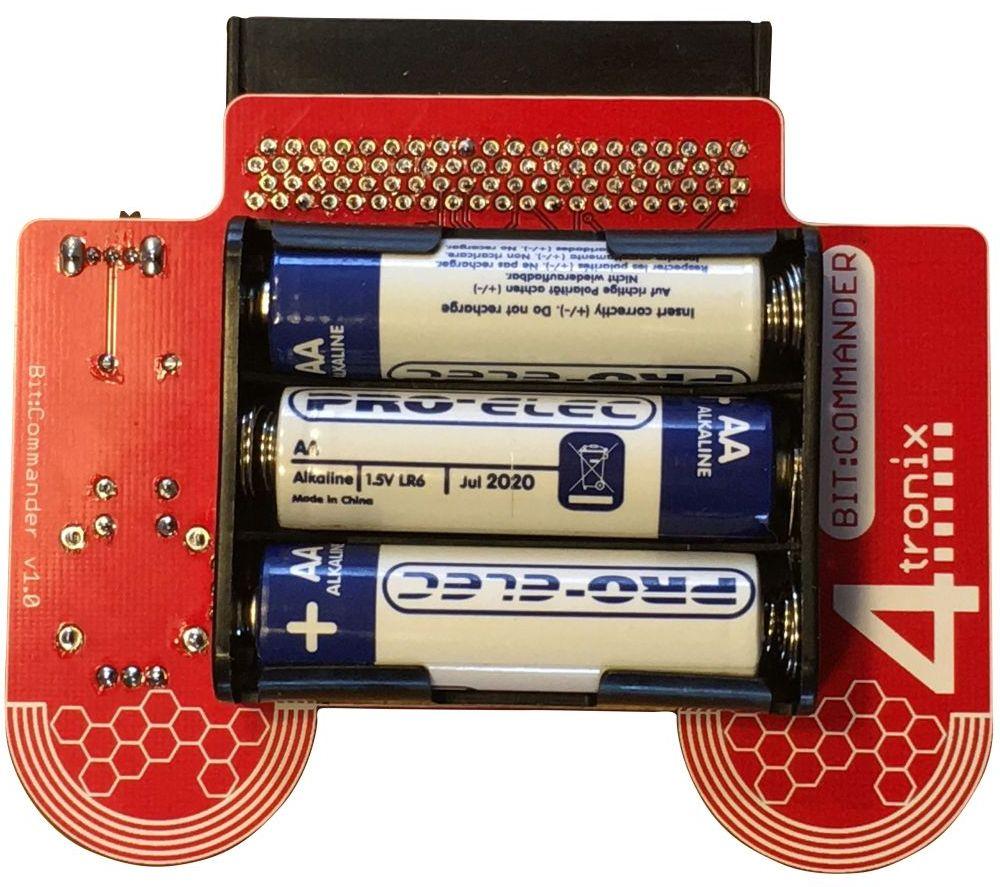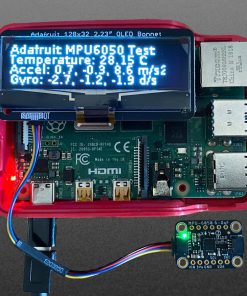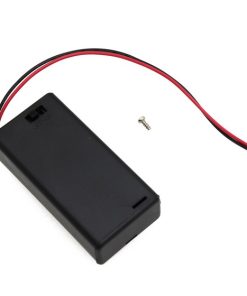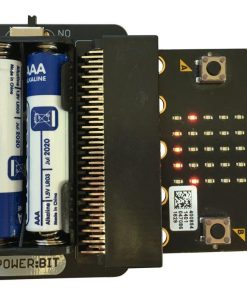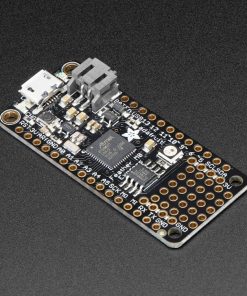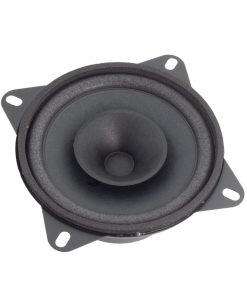4Tronix Bit:Commander Console & Controller for BBC MicroBit (BitCommander) 4tronix
$ 44,60 $ 26,76
The Bit:Commander is a great device for powering and experimenting with the BBC micro:bit. It combines a speaker, RGB LEDs, battery cage, extra buttons, on/off switch, analog dial, and joystick all in one compact unit.
Overview
As well as a battery pack (3 x AA batteries required), the Bit:Commander includes
- Edge Connector for easy connection of the BBC micro:bit
- On/off switch
- Blue power indicator
- 6 multi-colour RGB LEDs (aka neopixels)
- 4 square 12mm push buttons with coloured caps (Red. Yellow, Green, Blue)
- Analog dial input with Min, Max and intermediate markings
- Analog Joystick with X and Y movement and a push switch
- Powered miniature speaker
Suggested uses:
- Acting as a remote control for another micro:bit device, such as a Bit:Bot
- Acting as a self-contained portable (no wires) games console
- Experimenting with various Digital and Analog inputs available as well as the speaker and neopixel outputs
- Everything is pre-fitted. No wires, soldering or jumpoers to fiddle with
Pin Connections:
- Speaker: Pin 0 (*)
- Dial: Pin 0 (*)
- Joystick X: Pin 1
- Joystick Y: Pin 2
- Joystick button: Pin 8
- Neopixels: Pin 13
- Red Button: Pin 12
- Yellow Button: Pin 16
- Green Button: Pin 14
- Blue Button: Pin 15
(*) Pin 0 is used both for Speaker output (using the Music or Tone output methods) as well as the Dial analog input. This causes some compromises – most notable of which is that the Dial analog input cannot reach its normal maximum value of 1023 and stops at around 850 instead. As long as the software understands this, then it shouldn’t be a problem.
NB. The Bit:Commander is only powered if batteries are fitted and it is switched on. Powering the micro:bit does not power the Bit:Commander. However, when the Bit:Commander is powered up, then it will also power the micro:bit (available separately)
Resources:
See the 4Tronix Blog Post for more information
Also see Mark Atkinson’s excellent site for:
- Blocks programming with Bit:Commander
- MicroPython programming with Bit:Commander
Fast Shipping and Professional Packaging
Because of our long-standing partnership with UPS, FedEx, DHL and many other leading global carriers, we can provide various shipping options. Our warehouse staff is highly trained and will pack the items according to our exact and precise specifications. Before shipping, your goods will be thoroughly examined and secured. We deliver to thousands of customers every day from all over the world. This is a sign of our dedication to being the largest online retailer worldwide. There are distribution centers as well as warehouses located in Europe as well as the USA.
Note: Orders with more than one product are assigned a specific processing period dependent on the particular item.
Before shipping, we will examine the items ordered carefully before shipping. The majority of orders are shipped within 48 hours. The time to deliver varies from 3-7 days.
Returns
The stock is constantly changing and cannot be fully controlled by us due to the involvement of many parties including the factory and our warehouse. This means that the actual stock could alter at any time. Be aware that it is possible that your order could be out of stock after you have made the order.
Our policy lasts thirty days. If you haven't received your item within 30 days, we're unable to offer the option of a refund or exchange.
You are able to return an item when it's unopened and is in the same condition as when you first received it. It should also be returned in its original packaging.
